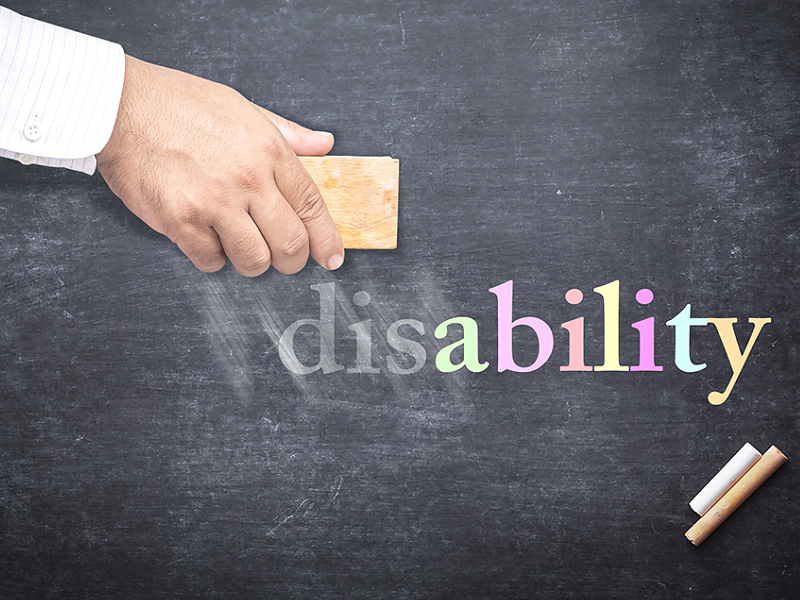For many years, families with disabled loved ones avoided saving money for them for fear of the benefits they’d lose. Disabled people receiving certain federal benefits had a maximum limit on cash savings of $2,000. If their savings went over this amount, it meant things like Medicaid or access to supportive services could be lost, or Social Security disability payments suspended. This prompted many who were eligible for federal assistance programs to spend rather than save.
While families with means could set up a Special Needs Trust, there wasn’t a simple, straightforward way to allow those with disabilities to save until 2014 when the Achieving a Better Life Experience Act (ABLE) was passed. ABLE allows people with disabilities to save money without losing their benefits. However, many people don’t really know about, or understand, how ABLE accounts operate.
ABLE accounts function similarly to 529 college savings plans as they allow contributions to grow tax-deferred, and any distributions that are used to cover qualified disability expenses can be withdrawn tax-free. They are limited to those individuals with disabilities that began before age 26. Those who meet the age requirement and receive benefits under SSI and/or SSDI are automatically eligible to open an ABLE account. Those meeting the age requirement but not receiving SSI and/or SSDI could still be eligible to open an ABLE account if they meet Social Security’s definition and criteria regarding significant functional limitations, and they receive a letter of disability certification from a licensed physician, M.D., or D.O. Knowing what options are available and how they function can help you better prepare and plan for any loved ones with disabilities.
What, if any, limits are there for ABLE accounts and will savings impact benefits?
ABLE does limit the amount that can be contributed annually. For 2020, the contribution limit is $15,000. However, employed ABLE account owners who don’t participate in an employer sponsored retirement plan can make an additional contribution. The additional amount limit is the lesser of 1) the ABLE account owner’s compensation for the year or 2) the poverty line in the continental U.S. at $12,140 ($13,960 in Hawaii and $15,180 in Alaska). A total of $100,000 can be saved in an ABLE account without impacting any benefits. If, and when, an ABLE account exceeds $100,000, the account owner’s SSI cash benefit would be suspended until the account falls back below $100,000. It’s important to note that the level of savings has no effect on the person’s ability to receive, or be eligible to receive, Medicaid.
Not all contributions need to be made by the owner, any family member or friend can contribute to an ABLE account on behalf of the beneficiary. Contributions can also be made from a trust, estate, partnership, or corporation.
What expenses are qualified under ABLE?
Any expense incurred by the designated beneficiary as a result of living life with a disability qualifies. This may include:
- Education
- Housing
- Transportation
- Employment training and support
- Assistive technology
- Personal support services
- Health care expenses
- Financial management and administrative services
- Other expenses which help improve health, independence, and/or quality of life
- Funeral and burial expenses
Do I use my own state's ABLE plan or another's?
Many states have their own ABLE plans, but not all. While there’s no federal tax deduction for contributing to an ABLE account, some states offer a benefit in the form of a tax credit or deduction. Currently, 16 states offer a tax break on contributions. They are Arkansas, Illinois, Iowa, Kansas, Maryland, Michigan, Mississippi, Missouri, Montana, Nebraska, Ohio, Oregon, Pennsylvania, South Carolina, Virginia, and West Virginia.
If you do not live in one of the states offering a tax break on contributions, consider the following when choosing between alternative state plans:
- Account Opening: What documentation is required? Are there account open minimums, and is there a fee to open the account?
- Account Maintenance, Fees and Ease of Use: Determine if there are required minimum contributions, maintenance fees, or restrictions on distributions. Also, see if the ABLE plan you are considering offers a prepaid card or debit card to make accessing the funds easier.
- Investment Opportunities and Fees: What options are available, and what are the costs associated with them?
- Medicaid Recovery Policy: Some states have a policy where they’ll seize any unused assets from an ABLE account when the account holder dies. For some, this may warrant further exploration.
The following website provides more information about ABLE and allows you to compare the various state plans – https://www.ablenrc.org/compare-states.
Which is better: an ABLE account or Special Needs Trust?
Both accounts have benefits. It all comes down to your personal situation in determining if you should use one over the other, or both. If you’re a high net worth family, you’d likely benefit from setting up a special needs trust and establishing an ABLE account. Trusts can contain not only cash and other liquid assets, but real or personal property, whereas ABLE accounts can only be funded with cash. However, any money paid from the trust directly to a disabled beneficiary or to someone who provides the beneficiary with food or shelter reduces the SSI benefit. Money paid from a trust directly to a person or entity to provide items other than food and shelter does not reduce the SSI benefits (examples are medical care, educational expenses, telephone bills, entertainment, etc.). ABLE accounts can work in coordination with trusts. In these instances, money paid from the trust into an ABLE account is excluded from income.
Trusts can be costly to set up and may not be a great option for small amounts of money. The ABLE account is preferred in this instance.
If you’re interested in setting up a trust, the following website can help you find an attorney in your state that is well versed in special needs: https://www.specialneedsalliance.org/find-an-attorney/.
If you have any additional questions please don’t hesitate to contact us, we’re here to help.




